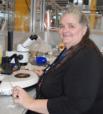

Showing 281 - 300 of 504 results


Highlights - Aerosol Sampling
ANSTO has been tracking and publishing data on fine particle pollution from key sites around Australia, and internationally, for more than 20 years.
Window into the cell
Access to a ‘window into the cell’ with University of Wollongong cryogenic electron microscope at ANSTO.

Information about ANSTO’s COVID-19 Rapid Antigen Test Program
Information about ANSTO’s COVID-19 Rapid Antigen Test Program
ANSTO User Meeting 2023 - Awards
You are invited to submit to the various awards from ANSTO, User Advisory Committee (UAC) and Australian Neutron Beam User Group (ANBUG).
The Victor Chang Institute School Science Awards

Soft x-ray spectroscopy
Soft x-rays are generally understood to be x-rays in the energy range 100-3,000 eV. They have insufficient energy to penetrate the beryllium window of a hard x-ray beamline but have energies higher than that of extreme ultraviolet light.

Role at ANSTO

Corporate Publications
Explore ANSTO's range of publications and reports available for the public.
FAQs - Macromolecular Crystallography
Frequently Asked Questions on the Macromolecular Crystallography beamlines (MX1 and MX2)

How climate change is erasing the world’s oldest rock art
Australasia is home to some of the oldest rock art motifs in the world. In tropical latitudes, due to climate change, the rock art deterioration is accelerating.

Glossary

ANSTO User Meeting 2021 - Topics
Reconstructing a history of palaeoclimate in south-eastern Australia
The role of trace elements as palaeoclimate proxies has been explored in ANSTO-led collaborative environmental research.

Role at ANSTO

Bushfires can generate hazardous chromium in soil
Bushfires heat soil to extreme temperatures and this causes oxidation of chromium to a highly toxic and carcinogenic form.

Call for Proposals
Proposals at the Australian Centre for Neutron Scattering and National Deuteration Facility.
Compressed sensing technology
Using the theory of compressed sensing technology, a team of physicists and scientists invented and developed the CORIS360® platform imaging technology. Compressed sensing imaging can generate an image with far fewer samples compared with traditional imaging techniques.

ANSTO: A global leader in radiation safety and radioactive waste management
ANSTO: Australia’s knowledge centre for nuclear science and engineering.

Australian Centre for Neutron Scattering
The Australian Centre for Neutron Scattering (ACNS) is a major research facility for neutron science that comprises a suite of neutron instruments with a range of techniques for scientific investigations in physics, chemistry, materials science, medicine and environmental science among other fields.